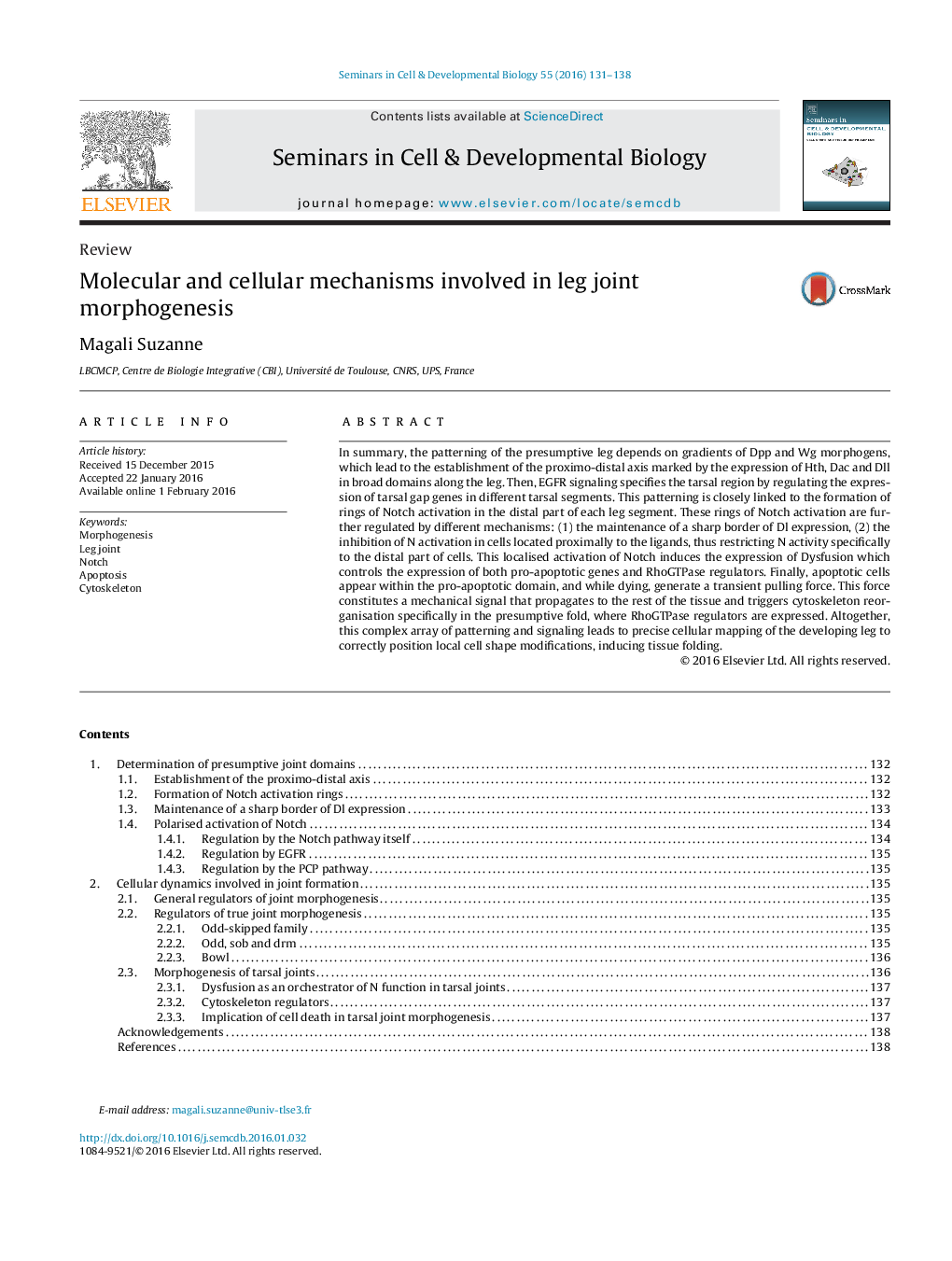| Article ID | Journal | Published Year | Pages | File Type |
|---|---|---|---|---|
| 2202511 | Seminars in Cell & Developmental Biology | 2016 | 8 Pages |
In summary, the patterning of the presumptive leg depends on gradients of Dpp and Wg morphogens, which lead to the establishment of the proximo-distal axis marked by the expression of Hth, Dac and Dll in broad domains along the leg. Then, EGFR signaling specifies the tarsal region by regulating the expression of tarsal gap genes in different tarsal segments. This patterning is closely linked to the formation of rings of Notch activation in the distal part of each leg segment. These rings of Notch activation are further regulated by different mechanisms: (1) the maintenance of a sharp border of Dl expression, (2) the inhibition of N activation in cells located proximally to the ligands, thus restricting N activity specifically to the distal part of cells. This localised activation of Notch induces the expression of Dysfusion which controls the expression of both pro-apoptotic genes and RhoGTPase regulators. Finally, apoptotic cells appear within the pro-apoptotic domain, and while dying, generate a transient pulling force. This force constitutes a mechanical signal that propagates to the rest of the tissue and triggers cytoskeleton reorganisation specifically in the presumptive fold, where RhoGTPase regulators are expressed. Altogether, this complex array of patterning and signaling leads to precise cellular mapping of the developing leg to correctly position local cell shape modifications, inducing tissue folding.
